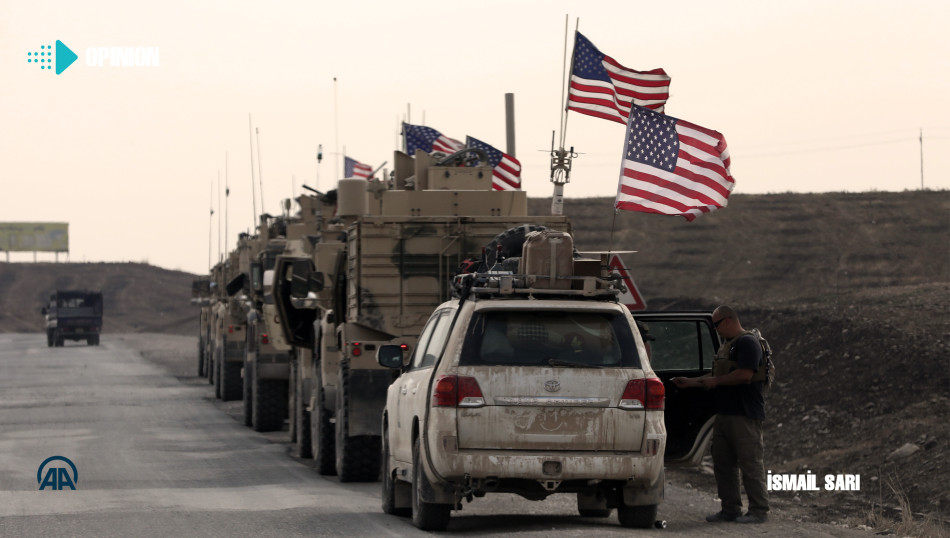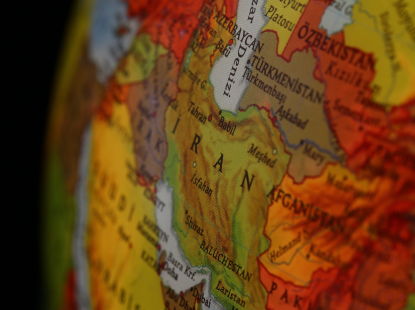The Tensions between the United States and Iran: A Conflict Strategy
On May 2018, the tensions between the United States and Iran that started with President Donald Trump’s withdrawal of the US from JCPOA, then escalated with the attacks in the Gulf, and reached its peak with the assassination of Soleimani on January 2nd 2020, however the tensions between the two countries seems to have entered a different phase with the attacks on the Taji Camp in Iraq that occurred on March 11th and March 14th. To continue, two American nationals and one British national were killed and fourteen people were injured during the first attack on the Taji Camp in Northern Baghdad on Wednesday. In these attacks, despite the fact that many American citizens were killed, it is the red line of the Trump administration, that the US forces only targeted the Iranian-backed up Iraqi militia groups in Baghdad, Karbala, Salah al-Din, Anbar, and Waist.
It is clear that the Trump administration did not want to ignite a hot conflict with Iran at a time when the maximum pressure policy’s results began torise. . Also, considering that the 2020 US presidential elections are approaching, the effects will be negative. Indeed, these are not the only reasonsbehind the US stance towards Iran. General Frank McKenzie, the head of the U.S. Central Command said that he "would caution Iran and its proxies from trying to attempt a response that would endanger US and its coalition forces and/or partners." In addition, he stressed that his command is "well postured to defend our forces around the region and to respond to any further aggression against our forces," noting that the secretary of defence has given him two aircraft carriers to support the CENTCOM missions. He also added that, "We have the flexibility, capability and will to respond to any threat," During On this incident, it seems that the Washington administration did not want to spark further tensions with Iran. However, the continuation of the attacks of the Iranian supported groups brings along various comments, such as: that the deterrence of the USA has weakened and that the red lines have become meaningless. On the other hand, in such a scenario it may be expected that the Washington administration will soon put forth critical responses to prevent possible attacks. Otherwise, larger attacks may occur, because the situation might further encourage the Iranian side to take action.
While this is the case, the US officials have announced that the US troops will be transferred to many central bases by transferring three military bases in Iraq to the Iraqi army over the next couple of weeks. In addition, this decision came with the US decision to install new missile defence systems in Iraq. Thus, the US aims to ensure the security of its troops at fewer headquarters that are not dispersed throughout the country. Moreover, the US is not expected to decrease its military presence in Iraq. These measures enacted by the US, may be implemented to prevent existing attacks or to prevent new attacks after future operations. However, it is possible to say that in the short term agenda of the US, it follows a defensive policy against Iran.
Iran Prepares for Trump’s Second Term
As demonstrated by the parliamentary elections on February 21, the Tehran administration has been preparing for the second term of Trump and trying to design its domestic policy according to this foreign political atmosphere. While conservatives constitute 79% of the parliament in these elections, the Iranian political life, in which is based on the "reformist-conservative" competition, will appear to be shaped according to the tone and approaches among conservatives and will set the scene of "conservatives-radicals" in the new period. As a result, a conservative candidate is likely to win the 2021 presidential elections in Iran. One major reason that lies behind this situation, stems from the domestic policy of Iran, which is a country which bases all of its international relations indexed towards the US and unfortunately takes its share from this. As Sadegh Zibakalam said, the biggest problem of Iran is its foreign policy, which is based on anti-US discourses and it is not possible to solve other problems without solving this problem first. For this reason, Iran has to somehow sit at the negotiating table with the US. While there is no other option for Iran, it has been trying to scare the US and make it take a step back by increasing the tensions, which results in exposing the US to a common risk, such as war.
In these days, Iran has been following the "brinkmanship" technique that has been used by Thomas C. Schelling in his book:“The Strategy of Conflict”. As an international relations term, “brinkmanship diplomacy” strives to make competitors in line with your wishes or to take a step back by facing the opponent with an ever-increasing threat perception. In the brinkmanship diplomacy, it is aimed to test the opponent with the presence of the deadliest trump in one’s hand and keep the idea that the next step will be a disaster. Thus, the opponent has to take a step back in order not to be the first one to cause disaster. However, this strategy is extremely risky and at any time can result in an irreversible danger. To continue, this strategy has two determining factors. The first factor is uncertainty; the opponent’s side weakens with the uncertainty of what will happen next to the threat posed. The second factor is uncontrolled risk; here it is necessary to present the person with credible risk factors for what might happen, in other words, to make the threat posed. In order for the brinkmanship approach to be effective, the threat that is proposed or made visible must be great. However, it is also possible that a disaster might arise entirely from getting out of the way. Iran's threat to the US, in terms of this strategy; indeed is total war.
In the case of the US, it will choose the military intervention option against Iran. On the other hand, Iran will try to respond to the US as much as it can, but the results of this war, in which Iran could not win conventionally, would be devastating, considering the military capacity and technological gap between the two countries. However, it should be remembered that the US army has many losses, because of the attacks implemented by the Shiite militia groups, in which were affiliated with the Mahdi Army in 2003-2005. Also, immediately after the US invasion of Iraq continues its effectiveness and deterrence in the region through Iran's proxy forces. In the case of any war, the US will pay a huge price. In such a situation, Iran can initiate intense attacks against the US forces in the Gulf, and can also retaliate against the US soldiers and bases with proxy groups affiliated to it. Furthermore, Iran can also shake the world’s oil markets by cutting of the oil flow through the Strait of Hormuz.
However, this type of scenario is neither what the US nor what Iran wants. Rather, both sides want to sit strongly on the negotiating table and weaken the other side. Additionally, both sides are aware of in the case of a war that they will lose. As it is known, after 11th of September.
Iran, which has gotten rid of its enemies (Taliban and Saddam) in the east and west, has accelerated its nuclear program with security concerns only because it is disturbed by the USA's settlement in the region and the bilateral siege (Afghanistan and Iraq). The USA, which withdrew from Iraq in 2011, is now preparing to withdraw from Afghanistan, which it had occupied in 2001. Also, the agreement with the Taliban forces in this direction was signed in Doha on February 29. Attracting American troops from Afghanistan is among Trump's foreign policy priorities. Although the Trump administration does not provide a safe environment for Iran as the Obama period did, the situation is not as bad as the Bush period.
That he Tehran administration, which is on the verge of economic destruction and is trying to cope with the corona virus epidemic, sent the Secretary General of the National Security High Council Ali Shamkhani to Baghdad in a period where new balances are tried to be established, and the attacks are indicators that Iran will continue to take high risks. In this sense, Iran may think that it is comfortable until the November 2020 Presidential elections, but these actions will not be forgotten at the negotiating table afterwards. Just as the assassination of the Soleimani was engraved in the collective memories of the Iranian people, after the coup of Mossadegh, Trump's sending of “52 targets” in a possible attack is a clear indication that the US collective memory is as strong as Iran’s.











